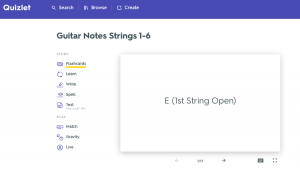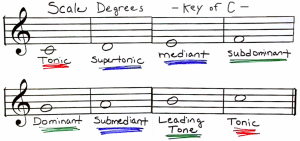SUMMARY
We learned about melody and worked on soundtrap and hooktheory
CLASSROOM
Watch How Melody Works (47 minutes)
-Five special notes make good melodies effective
-Intervals are the distances between notes in melodies
-Different modes=different moods
-diatonic is the frequencies for notes
LAB
I messed around and made a melody that I like.
PRACTICE ROOM
Watch How to practice effectively…for just about anything – Annie Bosler and Don Greene

- Quizlet Guitar Strings / Notes Flashcards
- As I read the flashcards I imagined playing the notes one guitar. I learned from the TED video that practicing in the morning and night is helpful.
OUTSIDE / JOURNAL / IDEAS
Watch Elizabeth Gilbert discuss creativity.
-The pressure of being called amazing by others is killing people off.
– I thought the idea of fairies living in people’s walls was kind of weird but it was an interesting idea.
STUDIO
- By Jamie Henke, music.wisc.edu/faculty/jamie-henke/
Melody Composition Terms
- Theme – a long, more flowing melodic idea
- Motive- a short, rhythmic idea
- Period- Musical sentence
- Phrase- a set within the music sentence
- Antecedent (Question) Phrase- first phrase, sets up the music
- Consequent (Answer) Phrase- second phrase, responds to the first phrase
- Scale Degrees
- Tonic- Begins the scale and ends the scale. One scale degree, creating a sense of stability and resolution.
- Supertonic, Mediant, Submediant-tonics, need to move forward but significantly less force
- Dominant, Subdominant, Leading Tone- Has the most force, several scales that create tension for the tonics to resolve
- Steps- any movement using half or whole steps
- Leaps- any movement using intervals larger than whole steps
- Conjunct motion- melody built out of steps
- Disjunct motion- melody built out of leaps
- Repetition- uses repeated material to create a link between two phrases of a period
- Contrast-phrases contrasting with one another, but have enough similarities to make it work. This could be two phrases with repeating segments in each other to tie it together, or similar beat layout
- Variation-Halfway between contrast and repetition. The two phrases include some recognizable materials and varied materials
Melody Resources


Mr. Le Duc’s Key of C Major Notes and Chords Chart (PDF)
CONTROL ROOM
Learn how to Create Tracks
Explore the Piano Roll, Drawing and Moving Notes
Learn to Edit Notes, Velocity, and More
Learn to Create Your Own Presets
- I tried making some stuff on Soundtrap, but I didn’t really like how it sounded.
WHAT I LEARNED and PROBLEMS I SOLVED
I learned about melodies and a lot of different terms related to melodies that helped me understand how they’re made better. I enjoyed going on Hook Theory because I was able to make something that I liked on it. There were some things on Sountrap that were confusing but by messing around with stuff enough I was able to see how it worked.
